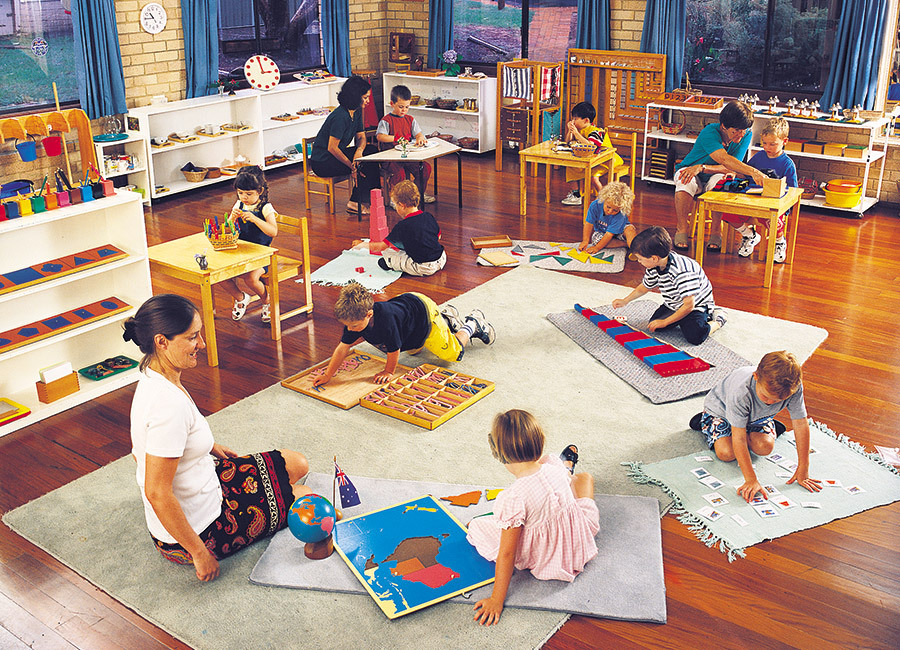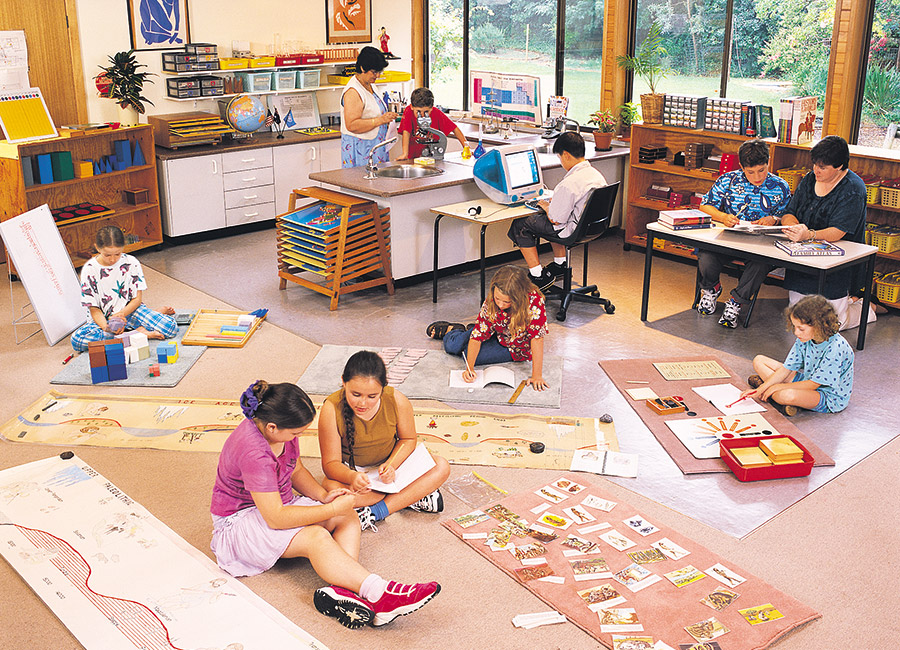Montessori educational programmes are offered for children from birth to eighteen years. From the age of 3 years, the children participate in mixed age groups spanning 3 years (3 to 6, 6 to 9, 9 to 12, 12 to 15, 15 to 18). The majority of Montessori schools are run by community-based, non-profit associations with children typically entering pre-school at three years. The largest growth in Montessori is in the early childhood sector with long day care and early childhood centres. Trained Montessori teachers and assistants are in high demand across the country.
Walk into a Montessori classroom, anywhere in the world, in any suburb of any city and you will invariably see happy and busy children working purposefully. The classroom itself will typically be beautiful and enticing. Great care has been taken to create a learning environment that will reinforce the child's independence and natural urge toward self-development. This is achieved in three ways: beauty, order and accessibility. The Montessori materials are beautifully handcrafted and are displayed on low open shelves. Each piece of material has a specific purpose and is presented to the children in a manner that will enable them to direct their own learning.
The Montessori materials are tools to stimulate the child into logical thought and discovery. They are provocative, enticing and simple. Each piece of material presents one concept or idea at a time and has what is known as a "control of error". If the child has done something incorrectly it will be self-evident. The geometric shape, for example, won't fit the hole; the water will spill on the table or the last label will not match the last picture. Being able to see his or her own mistake allows the child to work independently.
The Montessori classroom is not merely a place for individual learning. It is a vibrant community of children, where the child learns to interact socially in a variety of ways. The three-year age range enables older children to teach the younger and learn much themselves from the experience while the younger children are inspired to more advanced work through observing the older ones. With such a variety of levels in the classroom, each child can work at his or her own pace, unhindered by competition and encouraged by co-operation. Children attend daily and for a three-year cycle.




